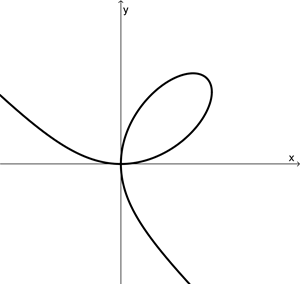
This page is all about implicit equations and how we find the gradient of them. Implicit equations are equations which are not written explicitly. Examination questions typically ask you to find the equation of a tangent or a normal to the graphs. This requires you to be able to find the gradient and we often have to use the product and chain rule. Before we get on to that, it is a good idea to understand what implicit equations are and why we use them.
On this page, you should learn about
- explicit and implicit equations
- implicit differentiation
Definition of Implicit Equations
You may be more familiar with explicit functions like y = x² and y = sinx. They are written explicitly since ‘y’ is the subject of these equations. You should know how to find the gradient function of these!
x² + y² = 1is an implicit equation, since ‘y’ is not the subject of this equation. It is difficult, and sometimes impossible, to write some relations like this explicitly. Many implicit equations have really cool and interesting graphs. If you want to play around with some of these graphs, get some background knowledge and understand why implicit differentiation is important visit to Graphs of Implicit Equations.
The following videos will help you understand all the concepts from this page
In this section, we'll look at what implicit functions are, what implicit differentiation is used for and how to do implicit differentiation.
y=x² and f(x) = sin(x) are both explicit functions.
Implicit equations are equations that are not expressed explicitly, for example y is not given explicitly as a function of x. The following are two examples of implicit equations: x + y = 1 and x² + y² = 4 . We use implicit differentiation to find the gradientfunctions of these.
The following video explains why we might need to use implicit differentiation and how we use the Chain Rule to do it. We'll see how we can find the gradient of the circle x² + y² = 4
Here is a quiz that will get you to practise deriving simple expressions using implicit differentiation
START QUIZ!
How much of Implicit Differentiation have you understood?






 Twitter
Twitter  Facebook
Facebook  LinkedIn
LinkedIn